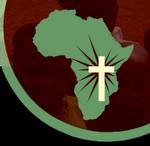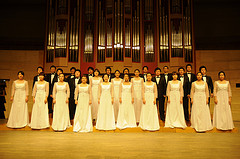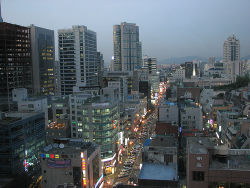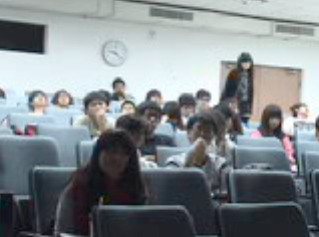 July 22nd, Friday.
July 22nd, Friday.
My favorite activity in Rwanda is attending the morning service every morning. Around 5:30 in the morning, I hear light foot steps leading toward the CASA yard, and entering into the reception area. About 50 people including little children start their day with prayers and reading the word of God. This morning, Chris used this awesome picture book for the first time. Kids were excited to see the pictures.
Last summer, Chris hired a Rwandan artist to illustrate 36 bible stories, then ask a Rwandan pastor to translate English into Kinyarwanda. At last, our good friend, Sandy put together fourteen hand-made books. These kids have never seen picture books before, now they can even touch it. I wish Sandy can see these delighted little kids.
Saturday, July 24, 2010
Picture book
Posted by
Come and See Africa
at
12:18 AM
0
comments
![]() Links to this post
Links to this post
Thursday, July 22, 2010
How long does it take you to go to Rwanda?
Posted by
Come and See Africa
at
3:08 PM
0
comments
![]() Links to this post
Links to this post
Friday, July 16, 2010
Concert at four different locations in August
After many months of phone calls and explanation to many different people, a tour for them is set. Churches are excited for them to come and perform, and many volunteers are joyfully participating to make this concert tour happen. I learned several things while I am doing this project: 1) don't hesitate to ask people for help, 2) collaborate with others in order to get the best result, and 3) be flexible.
They will arrive at SFO on August 12th, and leave 18th.
They will perform at four different places:
1. August 13th @ 6 p.m, San Lorenzo
2. August 14th @ 5 p.m, Scotts Valley
3. August 15th @ 2 p.m, San Ramon
4. August 15th @ 5 p.m, Oakland
Posted by
Come and See Africa
at
4:45 PM
0
comments
![]() Links to this post
Links to this post
They Learned ABC of salvation
Posted by
Come and See Africa
at
4:09 PM
0
comments
![]() Links to this post
Links to this post
Monday, July 12, 2010
Sunbeam and Sunwoo are visiting us
They came to CA on Friday, their father went back up to Oregon right away. Since then they have been with us, and they are such wonderful young men, we have been so blessed to get to know our nephews.
Posted by
Come and See Africa
at
10:04 AM
0
comments
![]() Links to this post
Links to this post
Saturday, July 10, 2010
VBS time again
Our church runs a Vacation Bible School every summer. It is a full blown program for a week for all ages, from 3 year old and up. I am in charge of adult class. I have fun doing different kinds of activities together, we socialize, eat, do craft projects, study Words, sing, and do games, and much more. My students are from age 20 to 95 years old.
I used to attend a VBS as a child, then became a VBS teacher while I was in college, then there was no more VBS in my life until I came to the First Southern. Nowadays, most churches don't have VBS program. Kids have too many other activities to do during the summer, I am told that that is one of reasons for the end of VBS for many churches.
At our church, we decide to go upstream and resume the program 4 years ago. There are almost 30 plus adult volunteers for the program every year, and we draw around 30 to 40 kids to the program. I know that it is a lot of work for the low attendance, but it is good for us to continue to do it. If one child can learn about the love of God through the program, that is truly worth of our effort. So here we are.
We are doing it again this year, from July 11th through July 16th. We will meet at 6 p.m to 8:30 p.m every evening at First Southern. Everyone will learn something new and we will have fun.
Posted by
Come and See Africa
at
12:16 PM
0
comments
![]() Links to this post
Links to this post
Friday, July 09, 2010
Preparing to go to Africa
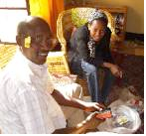 First, we are packing along 50 pairs of reading glasses. We carefully distribute these to elderly people in greatest need. Simple lack of glasses can prevent a pastor from reading his Bible or a seamstress from completing her work.
First, we are packing along 50 pairs of reading glasses. We carefully distribute these to elderly people in greatest need. Simple lack of glasses can prevent a pastor from reading his Bible or a seamstress from completing her work.
Second, we are packing along 35 graduation tassels. Come & See Africa operates a Bible school for university students at the National University of Rwanda. On July 24, thirty-five young people will celebrate their graduation. We rent the gowns, hand-make the caps, but we bring the tassels from America.
Posted by
Come and See Africa
at
11:35 AM
0
comments
![]() Links to this post
Links to this post
Monday, June 28, 2010
Block Party
Posted by
Come and See Africa
at
3:30 PM
0
comments
![]() Links to this post
Links to this post
Tuesday, June 08, 2010
Jeju Island
 I can’t believe it is already the 4th day of my travel. Now I am in Jeju Island. We were separated from our tour group due to the airline schedule changes. We arrived at Jeju airport at 3 p.m, and the tour guide took us to Goblin road, according to a folklore, the car drives on its own. The folklore tells a story about a taxi driver who dropped a passenger at a remote village on a late night. On his way back home, he stopped to take care of a nature’s call at a spot on this road. In the corner of his eyes, he saw his car was driven away. He was convinced that he saw a ghost drove his car. Since then this road is called Goblin Road. Our tour driver demonstrates it to us, the car moved for a few yards on its own. The road seemed to me slightly uphill, and yet our car was moving forward toward uphill on its own. I don’t know what this is all about, but Jeju tour companies need to have tourist spots like this to bring more tourists from the mainland Korea
I can’t believe it is already the 4th day of my travel. Now I am in Jeju Island. We were separated from our tour group due to the airline schedule changes. We arrived at Jeju airport at 3 p.m, and the tour guide took us to Goblin road, according to a folklore, the car drives on its own. The folklore tells a story about a taxi driver who dropped a passenger at a remote village on a late night. On his way back home, he stopped to take care of a nature’s call at a spot on this road. In the corner of his eyes, he saw his car was driven away. He was convinced that he saw a ghost drove his car. Since then this road is called Goblin Road. Our tour driver demonstrates it to us, the car moved for a few yards on its own. The road seemed to me slightly uphill, and yet our car was moving forward toward uphill on its own. I don’t know what this is all about, but Jeju tour companies need to have tourist spots like this to bring more tourists from the mainland KoreaWe sat in a row facing the windows, and looked outside. A man wearing his gear was luring fish with food, and all kind of tiny fish was following him around. The guide told us that the big fish are scared of people, but little ones are not afraid of. They are like humans. We learn helplessness and fearfulness, as we get older. Then we went to the deeper place and saw all kinds of underworld plants and corals. I saw flowers, trees, and vegetations under the water.
We visited Sam Bul Sa. Sam means three in Korean, Bul means Buddha, and Sa means temple. At the temple, we saw thousands of paper lanterns hung around the temple area, preparing for Buddha’s Birthday celebration.
We walked up a winding, steep hill that leads to a cave. Water drops were falling from the ceiling of the cave into a small well, people were lined up to drink water from a common cup. Again, a story tells us that this water is considered to be special. If a woman drinks this water, she will be able to conceive a child. I don’t know what happens if a man drinks this water, or a woman who passed her time to conceive a baby. I was afraid that I would be pregnant at my age, so I didn’t drink it.
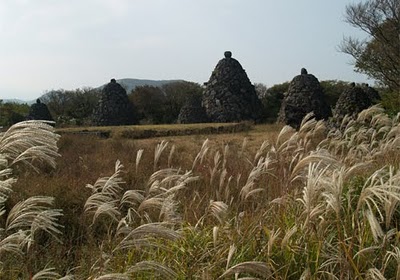
There is lots of folklore about woman in this island. One particularly interesting story was about Halla Mountain, which Korean considers it as "Jeju Island is Hallasan; and Hallasan is Jeju." The mountain can be seen from all places on the island, but its peak is often covered in clouds. Any way, a really big old woman lived in this island; she was so big that she used Hallasan as her pillow. When she lay down at night, she used Hallasan as her pillow, and her feet reached to the ocean. She had five hundred sons. One day, she made red bean stew for her sons for supper. As she stirs the stew, she fell into the huge pot, and she died. When her children came back from the field working all day, they ate mom’s delicious stew. When they were full, they start looking for mother. Where is she? Oh, No, they found her at the bottom of the pot. They moan for their mother for so long and hard that they turned into rocks. People can see five hundred human figure rocks lined up in this mountain.
Posted by
Come and See Africa
at
1:25 PM
0
comments
![]() Links to this post
Links to this post
Labels: Korea
Monday, June 07, 2010
Korea Prospering
It is wonderful to come home and see my friends are prospering. I noticed my friends prefer “made in Korea”. They also claimed that Korea is the most convenient place to live in the world. I believe them. Things are done fast, and even a bowl of soup from a restaurant can be delivered to your home within 10 minutes. Korea was not like this always.
Young people in 70’s wanted to get out of the country, seeking political freedom and economical prosperity. We were afraid of speaking out our minds. Some of my friends went to prison because they participated in student demonstrations against the government. But now people are free to speak, democracy is prospering.
Posted by
Come and See Africa
at
12:30 PM
0
comments
![]() Links to this post
Links to this post
Saturday, June 05, 2010
Posted by
Come and See Africa
at
11:44 PM
0
comments
![]() Links to this post
Links to this post
Labels: Korea
Wednesday, May 26, 2010
The Soul of Seoul
Last week I returned from a visit. Korea has changed so much that I can hardly recognize the place, especially the capitol city of Seoul. In fact, the shock I experienced in Seoul was similar to the culture shock on my first visit to America. This time I was a foreigner in my own homeland.
Seoul is the one of the most populous cities in the world. Almost half of South Korea's people live in the Capital Area. I was dropped off in the midst of the busiest part of Seoul; with a million people crowded within a few blocks. You can imagine my confusion. While I was looking for directions, I read hundreds church signs. It was comforting to see that Seoul has a soul. My friends told me that many Seoul churches have memberships of over ten thousand. I can believe her after seeing all those church signs.
I am happy to report that Korea has become a Christian nation. Korean Christians are passionate about winning souls and I can see the evidence of that. When I was in college many years ago, I was the only Christian among my eleven college friends. On this visit, I discovered that all eleven belong to either a Protestant or Catholic Church. I visited my alma mater which is a secular university. Yet Christ is lifted on campus by both Christian professors and students. They share a passion to declare the Gospel and to win souls. It was good to see my homeland become a prosperous nation, not only economically, but spiritually.
Posted by
Come and See Africa
at
8:11 PM
0
comments
![]() Links to this post
Links to this post
Sunday, May 02, 2010
Children are our teachers
I have learned so much from my own children, here is a proof that children are great teachers if adults would let them. A twelve year old girl is teaching us how to be good teachers and parents. Here is some info about Adora:
"A voracious reader from age three, Adora Svitak's first serious foray into writing -- at age five -- was limited only by her handwriting and spelling. (Her astonishing verbal abilities already matched that of young adults over twice her age.) As her official bio says, her breakthrough would soon come "in the form of a used Dell laptop her mother bought her." At age seven, she typed out over 250,000 words -- poetry, short stories, observations about the world -- in a single year.
Svitak has since fashioned her beyond-her-years wordsmithing into an inspiring campaign for literacy -- speaking across the country to both adults and kids. She is author of Flying Fingers, a book on learning."
Posted by
Come and See Africa
at
12:22 AM
0
comments
![]() Links to this post
Links to this post
Friday, April 30, 2010
Where do I shop for my snacks in Africa?
Whenever we are in Africa, we visit our friends in Rwanda, Uganda, and Burundi. On our way to Brundi, we spotted this little shop on the road side. It takes about 2 hours from Butare, Rwanda to Buzumbra, Burundi, and I look for something to munch on during the travel. Here is my Safeway in Rwanda that I stop to buy my stash. Peanuts are tasty, just as finger bananas. And price is great. A little bag of peanuts costs a nickle, a banana costs a penny, and a piece of bread costs 50 cents.
Posted by
Come and See Africa
at
2:05 PM
0
comments
![]() Links to this post
Links to this post
I am thankful for writers who put their heart and soul in their works.
Korean American Literature
The first wave of Korean-American writers consisted of two intellectuals who were born in Korea; Younghill Kang and Richard Kim. Younghill Kang was truly a pioneer Korean writer. He wrote two biographical novels in the 1930’s. His first novel, The Grass Roof (1931), took American readers into an unknown, exotic Korea. His second novel, East Goes West (1937), shed light on the lives of Korean intellectuals who were then living in exile from Japanese-occupied Korea. Three decades later, Richard Kim published his first novel The Martyred (1964)—about the Korean War experience. The Martyred was on the nation’s bestseller list for twenty consecutive weeks and was nominated for a Nobel Prize in Literature.
Posted by
Come and See Africa
at
1:29 PM
1 comments
![]() Links to this post
Links to this post
Monday, April 26, 2010
Visit to Taiwan
Posted by
Come and See Africa
at
6:51 PM
0
comments
![]() Links to this post
Links to this post
Tuesday, April 20, 2010
Safe Shelter
(May 2010 Newsletter)
The weather has been capricious lately. Yesterday, the afternoon sun warmed our condo up to 90 degrees, but this morning was chilly and damp. As I was settling into my armchair, enjoying my morning coffee with newspaper, I suddenly heard a noise from outside the window. I thought someone was scattering salt over our veranda. It was hail! But even before I stood to look, the hail turned into showers. This is a pretty rare happening in the Bay area.
Here in California, we are blessed with good year-round climate, but in many places, people live in the midst of harsh and unpredictable storms. Thunder, lightening, downpours, hail, and blizzards are commonplace. When I hear thunder and lightening, I know a storm is approaching. I quickly find the nearest shelter to weather the storm and stay dry. I know that if I ignore the signs, a storm might catch me and I might catch cold, or even suffer from pneumonia.
Just as we run into storms in nature, we run into storms in life. When you see a life storm approaching, what do you do? Do you run to a safe place? Or do you ignore the signs and suffer the damage it causes? As children of God, we are fortunate that we have a safe shelter – a hiding place – to run to in times of need.
Posted by
Come and See Africa
at
10:37 PM
0
comments
![]() Links to this post
Links to this post
Korean Poetry class
I think Korean language is a poetic language. In our last poetry class, we read poems written by Mr. Kim who taught the class. The title of poems are byul 별 하나, 별 둘, 별 셋.... the Korean word "byul (별)" is "star" in English. When we translate the byul into the English word star, the poem loses flavor. If the word is a person, the effect is almost like losing an arm or a leg. When I hear the word "byul", it brings up so much more than the word 'star". Same as the word hanul 하늘 and the word "sky" does. I can say so much more with few words in Korean. This is why I prefer to write poems in Korean, and prose in English. It has been fun to play with Koran words for a few months.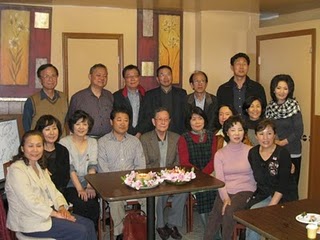
Posted by
Come and See Africa
at
1:00 AM
0
comments
![]() Links to this post
Links to this post
I miss my mother
I am planning to go to Korea in May. During this trip, I am going to visit my home town, a little village where I lived till I was 10 years old. My mother was a stranger to this little village. She was a refugee from North Korea during the 1950 Korean war, she fell in love with my father who was the first son of a rich land owner. His family rejected her with many different reasons; one of reasons was that she was a "modern woman" which means that she was exposed to the western thought. They called a woman a modern woman, if she was educated, wear a dress or skirts instead wearing a hanbok, wear a short-cut hair style, and she chose her own mate.
Mother has been gone for 5 years now, and I miss her more and more as the time goes by.
Modern Woman
You taught me how to walk
Like a lady
On our monthly outing to the village market
I would hop ahead of you
Hurrying to get to the bustling market place where
Vendors called my attention with their exotic wares
Pulling on your skirt
I was impatient with your measured walk
Instead, you stopped in the middle of the road
You told me to watch those scurrying people
Pointing how they walked
"Like a grasshopper, when a woman sways her hips and shoulder"
"Like a duck, when a women walks with her feet point outward"
Then you showed me the proper way to walk
"Step one foot over another as though you are walking on a rope in the air"
I watched you closely for the first time
On that dusty, gravel road
Lined with tall poplar trees
Wondering where the road leads
You were different even to my seven year-old eyes
You had schoolgirl hair-cut when others had rolled their hair up
You had a western dress when others had a hanbok
The villagers called you "modern woman"
With reverence and envy
Since that day, I have practiced walking straight
One foot over another like a tightrope walker
When I am afraid of falling
I think of that "modern woman" who showed me
A road out of that little village
Posted by
Come and See Africa
at
12:06 AM
0
comments
![]() Links to this post
Links to this post
Wednesday, April 07, 2010
A surprise visit
Peter, one of my former students, surprised me last week. As always, he finds a time to visit me whenever he is in SF. One of the best gifts for a teacher is to hear from graduates. Surprisingly, not many of them would contact their teachers after they graduate.
Peter took a class from me more than 10 years ago. While he was an undergrad student in the Broadcasting Department, he saw the future with digital media. His department at that time taught radio and TV programming, but his keen sense told him that he needs to go outside of his major to learn about new media. When he showed up in my multimedia course, my class was full. We usually can’t take undergraduate students in our department due to the limited number of computers in the lab.
When I told him that there is no room in the class, he looked so sad. I told him he should come back next week, and check if any student might drop the course. No one dropped. I told him that he has to work with his own computer and also I told him that he has to work hard to keep up with graduate students. He worked harder than anyone I knew in that course. I still remember, for his final project, he turned in a movie length multimedia project.
I was impressed with this young undergrad. To make a long story short, after Peter finished his BECA degree, he came to our department for his master’s degree in Instructional Technology. In 2002, he went on to get his from University of Idaho. While he was working on his doctorate degree, we stayed in contact for a while. I didn’t hear from him for a few years.
A few years ago, I got a phone call from him and said that he became a professor in Taiwan. He wanted to invite me to his university. That was in 2008. I visited Taiwan for the first time, I enjoyed the visit immensely. He arranged me to speak at several universities, and he made a plan for me to see the beautiful island, Taiwan. I enjoyed soaking in the famous hot spring, hiked on the most beautiful mountain that I ever saw, met so many wonderful students, and his colleagues who became my Facebook friends now.
Peter called me last Friday (April 2, 2010), and told me he is in US for two days. I invited him to my home and we had a lunch together. Our conversation covered from work, research, family, electron gadgets, religions, travel, and food. What a blessing to have a friendship like this. We are planning to do a research project together, so I can visit Taiwan again. I hope that day will come soon. Mean while I need to pack my bag for a visit to Korea in May.
Posted by
Come and See Africa
at
9:58 PM
0
comments
![]() Links to this post
Links to this post
